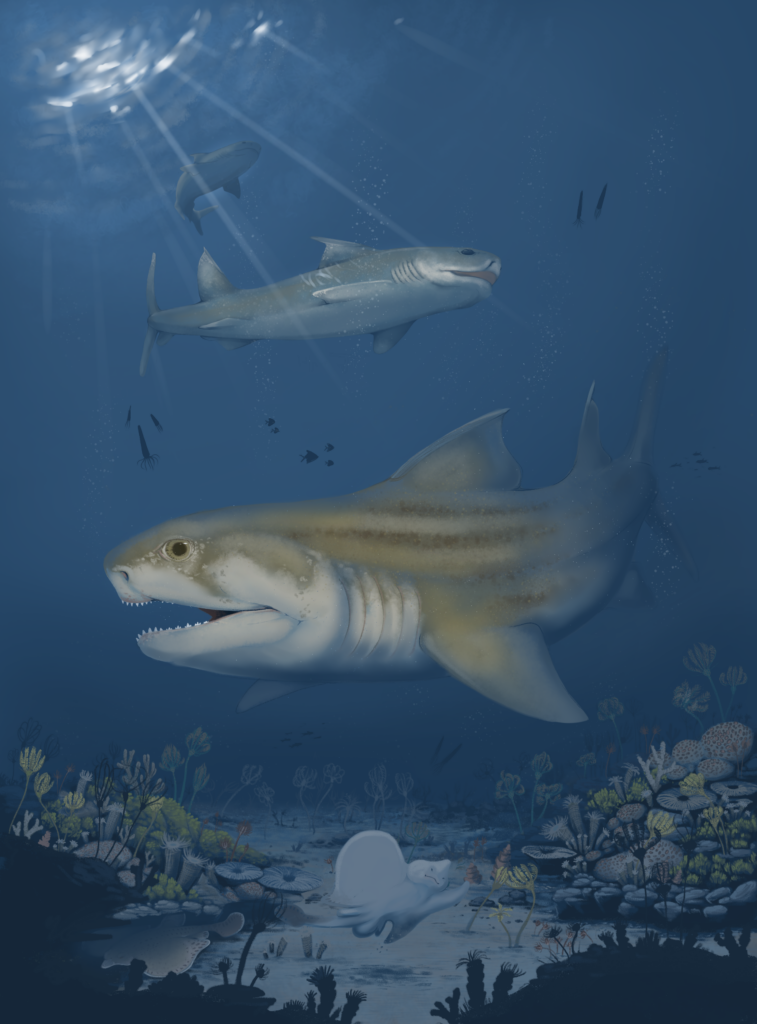
Paleozoic rock formations outcrop throughout northern Alabama and have been studied heavily due to their invertebrate diversity and abundance. Despite this heavy invertebrate literature base, vertebrates have been understudied. Recently, the Bangor Limestone of northern Alabama has had multiple new ~330 million-year-old shark species discovered within it.
These investigations have led to further fieldwork and museum studies of previously collected shark teeth, including specimens discovered by University of Alabama Museums’ Research Associate of Paleontology Gabe Ward during his undergraduate degree in the mid-2010s.
From these museum studies, University of Alabama master student Chase Egli and National Park Service paleontologist John-Paul Hodnett discovered isolated teeth of two new ctenacanth sharks within the Alabama Museum of Natural History collection, collected and subsequently donated by Ward. Many teeth of these new sharks were discovered by Gabe during his undergraduate fieldwork.

The new species Glikmanius careforum is named in honor of the Cave Research Foundation for their continued support of research and the discovery of the G. careforum jaws found in Mammoth Cave. The new genus and species Troglocladodus tremblei, the genus meaning “Cave Branching Tooth” and the species name honoring Mammoth Cave National Park Superintendent Barclay Tremble, are found throughout the Bangor Limestone and underlying unnamed shale unit of Alabama and from the cave passages Mammoth Cave National Park in Kentucky.
These two new ctenacanth sharks have helped understand and link the Mammoth Cave and Bangor Limestone faunas, with over 70 chondrichthyan species being noted from both strata. Ongoing work is being undertaken to continue discovery and documentation of these diverse Paleozoic chondrichthyans through the University of Alabama, the Alabama Museum of Natural History collection, and the National Park Service.
Reference:
Hodnett, J. P. M., Toomey, R., Egli, H. C., Ward, G., Wood, J. R., Olson, R., Tolleson, K., Tweet, J. S. & Santucci, V. L. (2024). New ctenacanth sharks (Chondrichthyes; Elasmobranchii; Ctenacanthiformes) from the Middle to Late Mississippian of Kentucky and Alabama. Journal of Vertebrate Paleontology, e2292599. https://doi.org/10.1080/02724634.2023.2292599